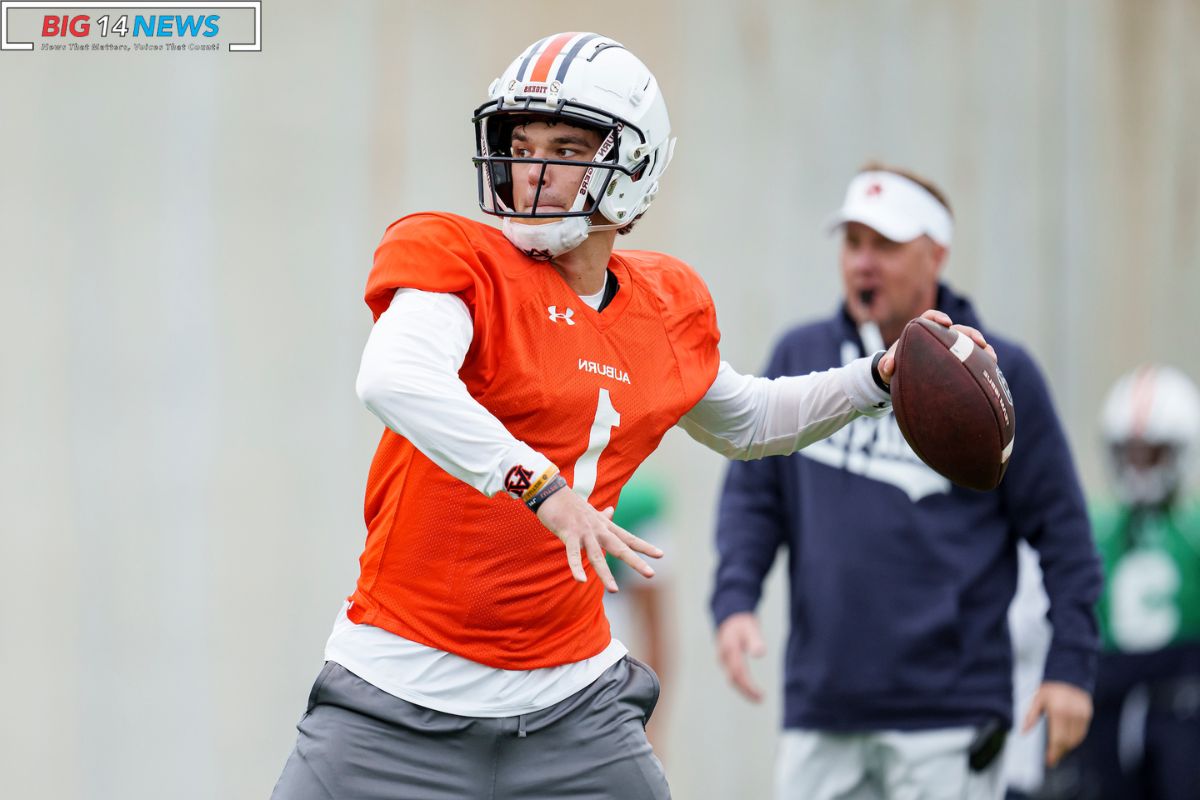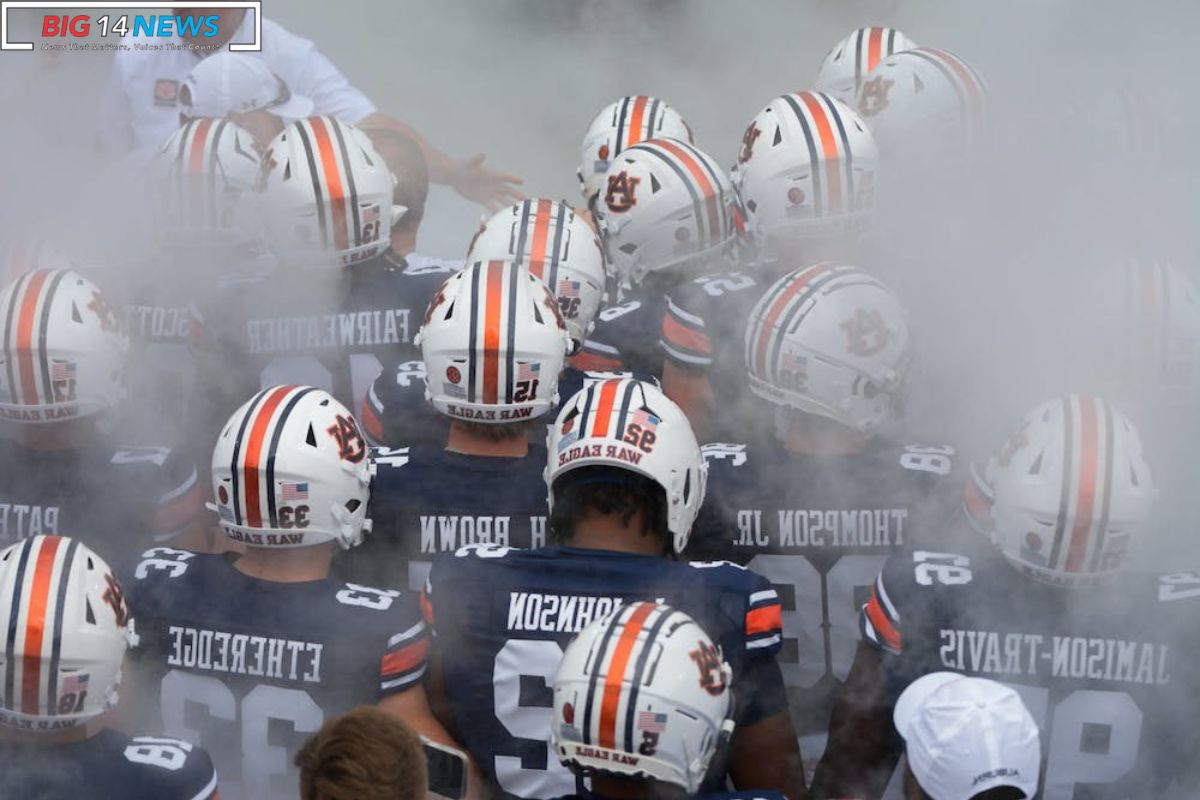Auburn and Maryland Pioneer Helmet Tech: In an era where technological advancements continue to shape the landscape of college football, the Music City Bowl witnessed Auburn and Maryland pioneering a revolutionary helmet communication technology.
This article delves into the intricacies of their respective approaches, as Auburn opted out of in-helmet radios while Maryland embraced this innovation.
As the long-term adoption and impact of such technology remains uncertain, this in-depth analysis sheds light on the significance of these advancements and their potential implications for the future of the sport.
Key Takeaways
- Auburn prioritizes player safety over using in-helmet radios
- Maryland embraces in-helmet communication technology during the Music City Bowl
- Uncertain future of technology in college football
- Conferences and teams have differing approaches to integrating technology in the game
College Football’s Sign-Stealing Saga Michigan’s Scandal Sparks Innovation
The recent sign-stealing scandal at Michigan has prompted significant innovation within the realm of college football. Coaches and teams are now realizing the importance of protecting their play signals from prying eyes.
As a result, there has been a surge in the development and adoption of new technologies aimed at preventing sign-stealing. One such innovation is the use of encrypted communication systems between coaches and players on the field. These systems ensure that only authorized personnel have access to the play signals, making it nearly impossible for opposing teams to intercept and decipher them.
Additionally, there has been an increased emphasis on physical security measures, such as shielding play-call sheets and using advanced hand signals to relay information.
The Michigan scandal has served as a wake-up call for college football, forcing teams to rethink their strategies and invest in cutting-edge technologies to maintain a competitive edge while protecting their play signals.

Experimentation in Action 14 Bowl Games Test NFL’s Helmet Communication Technology
In response to the sign-stealing scandal at Michigan, the Music City Bowl, featuring Auburn and Maryland, is among the 14 bowl games pioneering the use of the NFL’s helmet communication technology.
This innovative technology allows coaches to communicate directly with their quarterbacks, enhancing the efficiency and speed of play communication. The helmet communication system consists of a speaker and microphone installed in the quarterback’s helmet, enabling real-time communication between the sidelines and the field.
This advancement in communication technology aims to revolutionize the game, eliminating the need for hand signals and reducing the risk of miscommunication. The integration of this technology in college football not only showcases the sport’s commitment to staying at the forefront of technological advancements but also holds the potential to improve the overall quality of the game.
Auburn’s Stance Opting Out of In-Helmet Radios in Music City Bowl
Despite the potential advantages, Auburn has chosen not to utilize in-helmet radios in the Music City Bowl. Head coach Hugh Freeze, in his decision, prioritizes the well-being of his players. He believes that introducing in-helmet radios could lead to distractions on the field, potentially compromising the safety of the players. Additionally, Freeze recognizes that this technology is still in its experimental phase and may undergo significant changes in the future.

Maryland’s Embrace A Positive Approach to In-Helmet Communication
Maryland’s enthusiastic adoption of in-helmet communication technology during the Music City Bowl demonstrates their commitment to embracing technological advancements in college football. Head coach Mike Locksley recognizes the potential benefits of in-helmet radios, particularly in coaching young players during live games. By actively experimenting with this technology, Maryland is taking a positive approach to enhance communication and improve player performance on the field.
The embrace of in-helmet communication technology by Maryland evokes a sense of excitement and anticipation for the future of college football. It showcases the program’s willingness to explore innovative solutions that can give them a competitive edge. Furthermore, it demonstrates Maryland’s dedication to providing their players with the best tools available to succeed.
This commitment to staying at the forefront of technological advancements reflects a forward-thinking mentality that resonates with fans, players, and recruits alike. Maryland’s embrace of in-helmet communication is a testament to their progressive approach to the game and their determination to push the boundaries of what is possible in college football.
Uncertain Future Long-Term Adoption and Impact of Technology in College Football
The long-term integration and effects of technology in college football remain uncertain as teams navigate the potential benefits and challenges it presents. While some conferences and teams have embraced in-helmet communication technology, others are taking a more cautious approach. This uncertainty stems from various factors, including concerns about the impact on the game’s integrity and fairness, potential distractions for players, and the overall cost of implementing and maintaining such technologies. To better understand the current landscape, the following table provides an overview of the potential benefits and challenges associated with the long-term adoption of technology in college football:
| Potential Benefits | Challenges |
|---|---|
| Improved communication and coordination between players and coaches | Concerns about the impact on the game’s integrity and fairness |
| Enhanced player safety through real-time monitoring of vital signs and injury detection | Potential distractions for players, affecting their focus and performance |
| Access to instant replays and visual aids to aid in decision-making and strategy adjustments | The overall cost of implementing and maintaining technology systems |
As teams continue to explore and evaluate the advantages and drawbacks of technology integration, the long-term impact on college football remains uncertain.

Conclusion Of Auburn and Maryland Pioneer Helmet Tech
the Music City Bowl between Auburn and Maryland showcased the pioneering use of helmet technology in college football.
While Auburn chose to opt out of using in-helmet radios, Maryland embraced the positive approach of in-helmet communication.
The long-term adoption and impact of this technology in college football remains uncertain, but the experimentation and innovation seen in the bowl games provide valuable insights for the future of the sport.
Also Read: Birmingham Desperate Move to Shift Misdemeanor Inmates to County Facility

